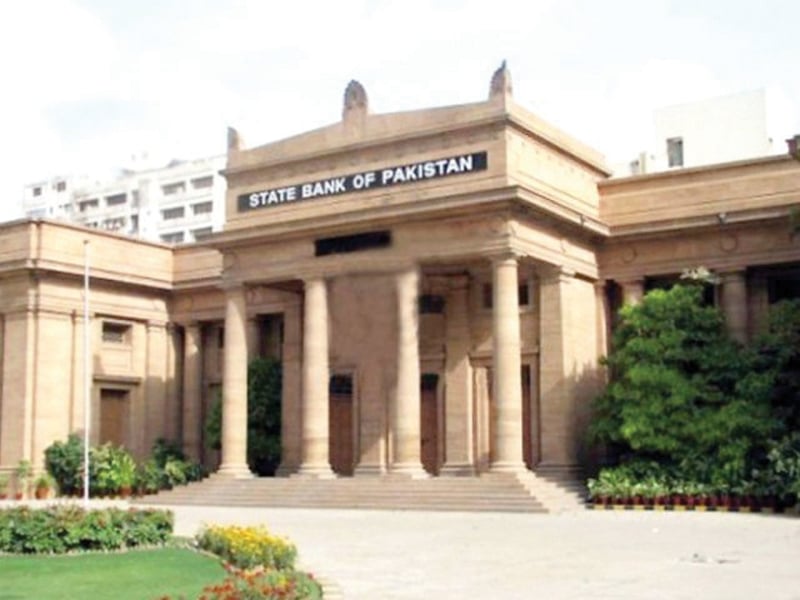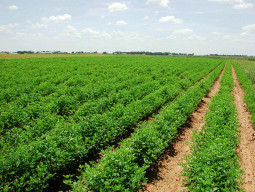
Pakistan's central bank has flagged piling debt burden, pickup in inflation reading and jump in imports as three major concerns in the growing domestic economy and suggested policymakers to remain vigilant toward the issues.
Besides, as many as 20.7 million people lost jobs during nationwide lockdown in Pakistan last year, but a vast majority of them returned to work in the wake of a rapid – V-shape – recovery in economic activities in second half of current fiscal year ending June 30, 2021.
The government has recently revised up its projection for economic growth to surprising 4% for the outgoing fiscal year 2021 compared to a negative growth of 0.5% recorded in the preceding fiscal year 2020 due to lockdown.
"The macroeconomic outlook for the current fiscal year has improved,"State Bank of Pakistan (SBP) said in its report on the state of Pakistan's economy in second quarter (Oct-Dec 2020) of the outgoing fiscal year 2021 issued on Thursday.
"Further impetus to the current economic momentum could come from a successful rollout of vaccines in the coming months. Business confidence has also been steadily improving…the resumption of the IMF programme is expected to unlock additional external financing and also support the country’s progress on the structural reform agenda," said the central bank in the report which was prepared days or weeks before the government revised up projection for GDP growth to 4% for FY21 in last week of May.
“Real GDP growth will exceed the target of 2.1%, and the SBP has revised its real GDP forecast for FY21 upwards, to 2-3%, from the earlier range of 1.5-2% provided in the First Quarterly Report of FY21," it said.
The macroeconomic analysis and projections in economic outlook section of the report "were current as of April 30, 2021, when the Board of Directors of the State Bank of Pakistan had accorded approval to the State of the Economy Report for the Second Quarter of FY21," it said.
Three concerns
The report flags three areas that merit continuing vigilance by policymakers. First is the burden of debt servicing. Despite a relative improvement in revenue generation, the bulk of interest payments during first half (Jul-Dec) of the current fiscal year 2021 was financed via the issuance of new debt, SBP said in press statement.
Read more: Oil prices fall on rising Covid-19 infections in Asia, inflation fears
Second, while national CPI inflation declined during the first half compared to the same half last year and stayed within the SBP’s projection for the full year, the prices of food items remain vulnerable to supply-side pressures in recent months.
Third, with the domestic economic activity recovering and global commodity prices rising, import pressures are resurfacing. Moreover, these pressures have been accentuated by the domestic supply-side challenges for major agricultural commodities – cotton, sugar and wheat – which necessitated their imports, the central bank said.
Job data
A survey of the Pakistan Bureau of Statistics (PBS) reveals that the total employment was at 55.7 million workers before the imposition of lockdowns in March 2020, and fell to 35 million when the constraints on movement were at their peak during April-May 2020 – a decrease of 37%, SBP reported.
"However, since then, with ease in restrictions and gradual restoration of economic activity, total employment recovered to 52.5 million," it said.
“The PBS survey further shows that along with the employment loss, around 6.7 million employees experienced a fall in their income as well.”
The survey shows that employment in the construction sector was most affected due to the lockdowns: 59% of the working population involved in the sector faced jobs losses, and 21% experienced reduction in their income.
And second is the welcome turnaround in the trend of Pakistanis going abroad for work. Work-related emigration from Pakistan rebounded in December 2020, and the trend has continued since then, it said.
Economy in second quarter, half
An accommodative monetary policy environment, targeted fiscal support and the adoption of smart lockdowns to contain the Covid-19 crisis led to a pick-up in economic activity during first half of FY21. The nascent recovery observed in the first quarter of the fiscal year became more tangible in the second quarter. Within industry, the growth in food processing and construction-allied segments of large-scale manufacturing stood out.
In agriculture, the preliminary data for the Rabi season related to inputs and areas own for the wheat crop is encouraging.
The services sector benefitted from the buoyancy in the commodity-producing sectors, with proxy indicators reflecting an overall improvement. Similarly, provincial industrial surveys reported a growth in manufacturing employment, which appeared to be broadly on course to recovery towards pre-Covid levels.
Moreover, the services account is projected to improve further, amid deeper drop in travel services imports after the re-imposition of mobility restrictions in some advanced economies in response to the third wave of Covid-19.
In the fiscal sector, the SBP’s projection for the budget deficit is unchanged, reflecting balanced risks. "On the downside, the receipt of the Gas Infrastructure Development Cess (GIDC) payments after the apex court’s decision would improve the overall fiscal balance.























COMMENTS
Comments are moderated and generally will be posted if they are on-topic and not abusive.
For more information, please see our Comments FAQ